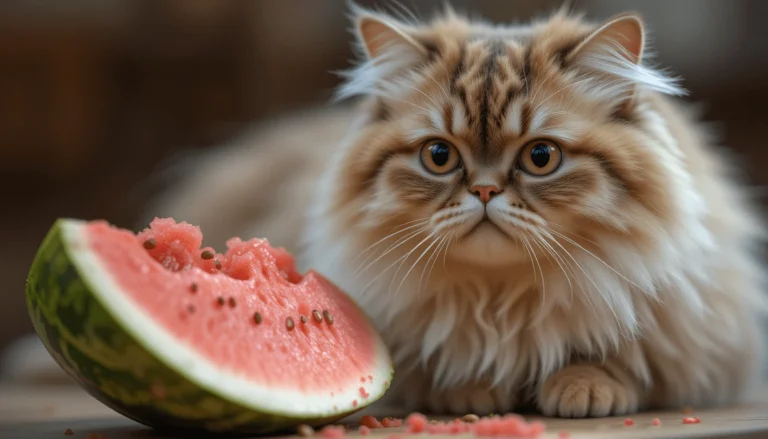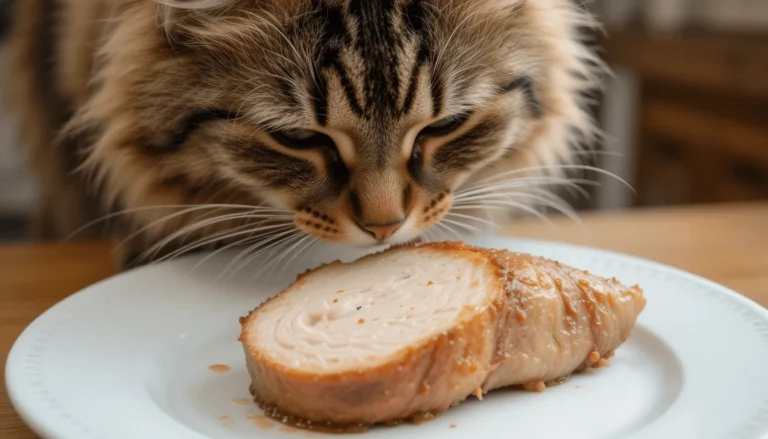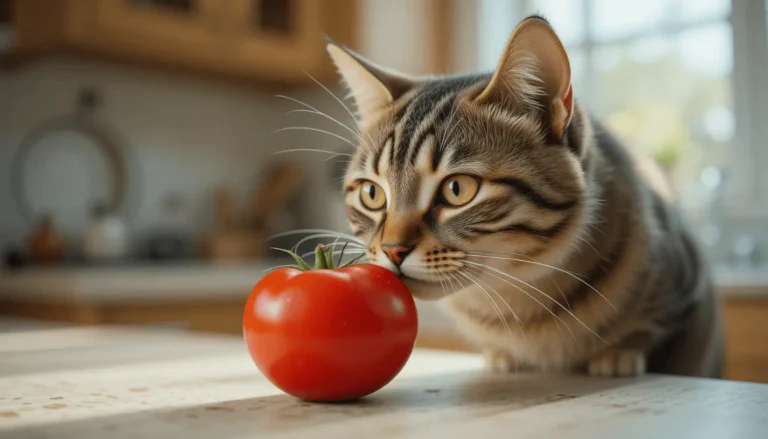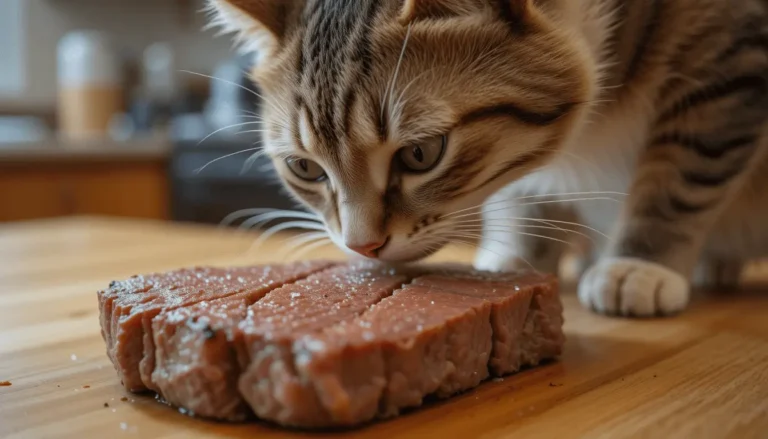Can Cats Eat Catnip? A Complete Guide for Pet Owners
Introduction
Picture this: You’ve just brought home a fresh bag of catnip, and your usually dignified feline transforms into a whirlwind of zoomies, rolling blissfully on the floor. But as you watch your cat bat at a catnip-filled toy, a question nags at you—can cats eat catnip, or is sniffing it the only safe way to enjoy it?
Every loving cat owner faces the same dilemma – how to pamper your whiskered companion while ensuring their wellbeing isn’t compromised . Catnip, that magical herb that turns lazy loungers into playful panthers, has been fascinating cat owners for centuries. But behind the euphoric head-rubs and playful pounces lies an important question: Is it truly safe for cats to consume, or could there be hidden risks?
In this guide, we’ll explore everything you need to know about whether cats can eat catnip, from the science behind its effects to expert-backed safety tips. You’ll discover:
- The truth about catnip’s safety—can it harm your cat if ingested?
- Why some cats go wild while others couldn’t care less
- Catnip’s Hidden Advantages – And When to Be Cautious
- How much is too much? A vet-approved dosage guide
- Creative ways to use catnip for play, training, and even stress relief
Whether you’re a first-time cat owner or a seasoned feline enthusiast, understanding whether cats can eat catnip will help you make the best choices for your pet’s happiness and well-being. Let’s dive in—your cat’s next favorite treat (or nap inducer) awaits!

Is Catnip Safe for Cats? Understanding the Basics
The Science Behind Catnip’s Feline Fascination
Botanically classified as Nepeta cataria, catnip belongs to the Lamiaceae family alongside mint, and produces a volatile compound known as nepetalactone that triggers feline responses. This compound is responsible for the characteristic reactions we see in cats. When cats encounter catnip, they may exhibit behaviors ranging from rolling and rubbing to hyperactivity or complete relaxation.
Interesting Fact: Only about 50-70% of cats are genetically predisposed to respond to catnip (ASPCA, 2023). The sensitivity is hereditary, meaning if a cat’s parents responded to catnip, they likely will too.
The Safety of Ingesting Catnip: What Research Shows
While most cat owners are familiar with cats reacting to smelling catnip, many wonder: can cats eat catnip safely? The short answer? Yes—but there are key factors to keep in mind :
- Non-toxic Nature: Veterinary toxicology reports confirm catnip is not poisonous to cats (Pet Poison Helpline, 2023).
- Digestive Differences: When eaten, catnip tends to have a sedative effect rather than the stimulating effect seen with sniffing.
- Fresh vs. Dried: Dried catnip is more concentrated, so you’ll need to use about half the amount you’d use of fresh catnip.
Pro Tip: Always introduce catnip gradually to monitor your cat’s individual reaction.
Special Considerations for Kittens and Senior Cats
Kittens under six months typically don’t respond to catnip because their olfactory systems aren’t fully developed (Cornell Feline Health Center, 2022). For senior cats:
- Start with smaller amounts
- Monitor for any signs of discomfort
- Consider their overall health condition
The Science Behind Catnip’s Effects on Feline Behavior and Health
The Neurochemical Magic of Nepetalactone
The active compound in catnip, nepetalactone, binds to receptors in a cat’s nasal tissue, which then stimulates sensory neurons leading to the brain. This triggers:
- Playful behavior (in about 60% of cats)
- Relaxation and calmness (in about 30%)
- No reaction (in 10-15%)
Fascinating Fact: The response to catnip is similar to how cats react to feline pheromones, which explains why some cats rub against catnip-soaked items.
Proven Health Benefits of Catnip for Cats
Recent veterinary studies have identified several benefits:
- Stress Reduction: Acts as a natural anxiolytic for cats experiencing separation anxiety or environmental stress (Journal of Feline Medicine, 2021).
- Exercise Motivation: Particularly helpful for indoor cats needing more physical activity.
- Appetite Stimulation: Can help cats recovering from illness who need encouragement to eat.
Clinical Note: Some veterinary clinics use catnip to help calm cats before examinations.

Digestive Effects and Potential Concerns
While catnip in small amounts may aid digestion:
- Positive Effects: Can help with mild constipation due to its mild laxative properties.
- Negative Effects: Large quantities may cause:
- Temporary stomach upset
- Mild diarrhea
- Excessive drooling in sensitive cats
Important: These effects are typically short-lived and resolve on their own within 24 hours.
The Practical Guide to Using Catnip Safely and Effectively
Determining the Right Dosage for Your Cat
The appropriate amount depends on several factors:
- Weight: 1/4 teaspoon per 5 pounds of body weight
- Form:
- Dried: 1/2 to 1 teaspoon max
- Fresh: 1-2 small leaves
- Frequency: No more than once every 2-3 weeks to prevent desensitization
Warning Signs of Overconsumption:
- Lethargy
- Vomiting
- Loss of coordination
Creative and Safe Ways to Administer Catnip
- Interactive Toys: Stuff catnip into puzzle feeders to stimulate mental and physical activity.
- Training Aid: Use as a reward during clicker training sessions.
- Environmental Enrichment: Sprinkle on scratching posts or bedding.
- Travel Comfort: Place a small amount in carrier before vet visits.
Storage Tips: Keep catnip in an airtight container in the freezer to preserve potency.
No Reaction to Catnip? These Alternatives Might Delight Your Cat
For the 30-50% of cats unaffected by catnip, consider:
- Silver Vine: Affects about 80% of cats
- Valerian Root: Has similar effects but stronger odor
- Tatarian Honeysuckle: Safe alternative with mild effects
Special Cases to Avoid Catnip:
- Pregnant cats
- Cats with epilepsy
- Cats on certain medications (consult your vet)
Final Thought: While catnip is generally safe, every cat is unique. Always observe your cat’s individual reactions and consult your veterinarian if you have any concerns about introducing catnip or alternatives to your cat’s routine.
Conclusion
After exploring the science, benefits, and safety guidelines, we can confidently say that yes, cats can eat catnip—in moderation. This fascinating herb offers more than just playful antics; it can provide mental stimulation, stress relief, and even digestive benefits when used correctly.
Remember:
Start small—a pinch of dried or a fresh leaf is plenty
Monitor reactions—every cat responds differently
Keep it occasional—too much can lead to desensitization
Whether you’re using catnip to spice up playtime, ease anxiety, or simply entertain your curious feline, it remains one of nature’s safest and most enjoyable treats for cats. So why not offer some today and see how your cat reacts—will they become a playful acrobat or a blissed-out zen master?
FAQs
Q: Can kittens have catnip?
A: Kittens under 6 months typically don’t respond to catnip, as their sensitivity develops with age.
Q: How often can I give my cat catnip?
A: Limit catnip sessions to once every 2-3 weeks to maintain its effectiveness.
Q: Are there cats that don’t react to catnip?
A: Yes! About 30-50% of cats lack the genetic predisposition to respond to catnip.
Q: Can catnip make my cat sick?
A: While rare, excessive amounts may cause mild vomiting or diarrhea. Always supervise first-time use.
Q: Is catnip addictive for cats?
A: No, catnip is non-addictive, though some cats may become overly excited if given too frequently.
Q: Are there alternatives to catnip?
A: Yes! Silver vine, valerian root, and Tatarian honeysuckle can affect cats similarly.
Wondering about other feline diet concerns? Check out our ” Safe Or Not ? Cat Food Guide ” for expert advice.







